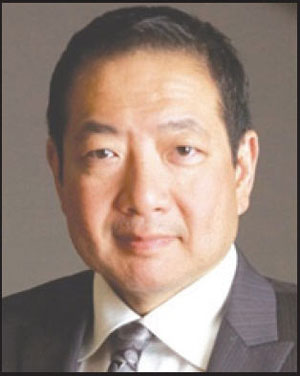The Toronto Lawyers Association recently presented a superb continuing professional development seminar for real estate lawyers. As part of the seminar, Raymond Leclair, by far one of the best of LawPRO’s public speakers, gave the obligatory speech on the LawPRO claims history for real estate practitioners in Ontario. While much of Leclair’s speech echoed the usual professional negligence themes, one aspect raised some eyebrows in the audience.
 Leclair noted that with the rapid aging of our population, we could expect to see more reverse mortgages underwritten in Canada. While it wasn’t surprising to hear that a financing technique aimed exclusively at seniors would rise in popularity concurrent with the aging of the population, what was surprising was that some of the lawyers in the audience seemed to have no idea what these so-called reverse mortgages actually were. In retrospect, that shouldn’t have been so surprising. While reverse mortgages have been available in Canada since the introduction of the Canadian Home Income Plan in the mid-1980s, reverse mortgages have nonetheless remained relatively rare and obscure in Canada with very few large institutional lenders currently offering anything like a reverse mortgage product. That, however, might be about to change.
Leclair noted that with the rapid aging of our population, we could expect to see more reverse mortgages underwritten in Canada. While it wasn’t surprising to hear that a financing technique aimed exclusively at seniors would rise in popularity concurrent with the aging of the population, what was surprising was that some of the lawyers in the audience seemed to have no idea what these so-called reverse mortgages actually were. In retrospect, that shouldn’t have been so surprising. While reverse mortgages have been available in Canada since the introduction of the Canadian Home Income Plan in the mid-1980s, reverse mortgages have nonetheless remained relatively rare and obscure in Canada with very few large institutional lenders currently offering anything like a reverse mortgage product. That, however, might be about to change.
The reverse mortgage concept is surprisingly simple. Senior homeowners borrow against the equity in their principal residence in pretty much the same fashion as any home-equity refinancing. The principal money may be advanced to the borrower in instalments or in a single, lump-sum advance and thereafter accrues interest like any ordinary mortgage. The difference, however, is that the borrower never has to make any interest or principal payments (although the borrower must still pay the taxes and maintenance and repair costs for the mortgaged property). It takes its popular title, the reverse mortgage, because the lender advances to the borrower and never expects any instalment payments in return. So colloquially, it’s the reverse of most mortgage financing scenarios.
This isn’t, of course, to suggest the borrower miraculously never has to pay any interest or pay back the principal borrowed. Of course, the borrower has to pay interest and pay back the principal borrowed but just not in regular instalments. Instead, all payments of interest and principal continually get recapitalized and added to the amount owing and are all payable in one lump-sum balloon payment at the end of the term. A reverse mortgage’s term to maturity is unusual.
The reverse mortgage doesn’t mature at a fixed time. Instead, reverse mortgages mature whenever the borrower dies (in effect being paid by the borrower’s heirs or by the sale proceeds in a power of sale after the borrower dies if the heirs refuse to pay) with a further acceleration clause when the borrower moves out of the mortgaged property.
As such, there’s a certain actuarial risk to the reverse mortgage business model. Since, generally speaking, the borrower never has to make a principal or interest payment before dying, there’s a certain science to predicting when that might actually happen. Predicting anticipated mortality won’t affect instalment payments as there aren’t any under a reverse mortgage, but getting the average anticipated age of death right will affect the loan to value advanced. The older the borrower is, the closer the person will be to dying and the more the lender can advance. A truly lucky borrower (for many reasons) is the one who takes out a reverse mortgage and then far outlives the anticipated age of the death, thereby running out whatever equity may remain in the home (even accounting for property value inflation over the same period). Because of the risk of long payment-free periods, lenders rarely give reverse mortgages to borrowers younger than 62 years old. That’s why people associate reverse mortgages with seniors who are house rich but cash poor.
To provide the necessary equity buffer lenders need to ensure there will be enough equity in the mortgaged property to pay off the accrued principal and interest balance, the typical reverse mortgage loan-to-value ratio is much lower than traditional home-equity mortgage loans. For typical Canadian reverse mortgages, this loan-to-value ratio can be as low as 25 per cent after accounting for closing fees. That compares to traditional home-equity mortgages that see loan-to-value ratios as high as 75 per cent.
Therein lies the usual criticism of reverse mortgages. Many antipoverty advocates and champions of consumers and the rights of the elderly have alleged reverse mortgages end up being inherently predatory as they lure seniors into rash borrowing decisions with the appeal of no payments only to find themselves with much smaller loan proceeds, an overall higher net cost of borrowing, and rapidly depleting home equity.
Notwithstanding this early criticism, reverse mortgages nevertheless have become quite popular in the United States among aging baby boomers to the point the arrangements, the overwhelming percentage of which are federally insured by the Federal Housing Administration, have become a serious drain on the federal treasury. Many of these U.S. reverse mortgages are now under water because of plummeting home-equity values since the beginning of the subprime mortgage crisis. The claims on the Federal Housing Administration for lender losses under reverse mortgages had become so serious since 2008 (with aggregate losses since that time exceeding US$5.25 billion at the end of 2013), that Congress recently passed legislation seriously restricting the future availability of federally insured reverse mortgages (although, frankly, the Federal Housing Administration had already started implementing selective underwriting measures to try and at least lower the loan to value of insurable reverse mortgages long before the introduction of these legislative reforms).
It’s speculative to suggest that the Canadian reverse mortgage market will ever rival that of the United States. That said, Employment and Social Development Canada has estimated that by 2051, about one in four Canadians will be 65 or over. That certainly sounds ripe for a financial product specifically tailored and available only to seniors who are house rich but cash poor.
Jeffrey W. Lem is a partner in the real estate group at Miller Thomson LLP. His e-mail address is [email protected].
 Leclair noted that with the rapid aging of our population, we could expect to see more reverse mortgages underwritten in Canada. While it wasn’t surprising to hear that a financing technique aimed exclusively at seniors would rise in popularity concurrent with the aging of the population, what was surprising was that some of the lawyers in the audience seemed to have no idea what these so-called reverse mortgages actually were. In retrospect, that shouldn’t have been so surprising. While reverse mortgages have been available in Canada since the introduction of the Canadian Home Income Plan in the mid-1980s, reverse mortgages have nonetheless remained relatively rare and obscure in Canada with very few large institutional lenders currently offering anything like a reverse mortgage product. That, however, might be about to change.
Leclair noted that with the rapid aging of our population, we could expect to see more reverse mortgages underwritten in Canada. While it wasn’t surprising to hear that a financing technique aimed exclusively at seniors would rise in popularity concurrent with the aging of the population, what was surprising was that some of the lawyers in the audience seemed to have no idea what these so-called reverse mortgages actually were. In retrospect, that shouldn’t have been so surprising. While reverse mortgages have been available in Canada since the introduction of the Canadian Home Income Plan in the mid-1980s, reverse mortgages have nonetheless remained relatively rare and obscure in Canada with very few large institutional lenders currently offering anything like a reverse mortgage product. That, however, might be about to change.The reverse mortgage concept is surprisingly simple. Senior homeowners borrow against the equity in their principal residence in pretty much the same fashion as any home-equity refinancing. The principal money may be advanced to the borrower in instalments or in a single, lump-sum advance and thereafter accrues interest like any ordinary mortgage. The difference, however, is that the borrower never has to make any interest or principal payments (although the borrower must still pay the taxes and maintenance and repair costs for the mortgaged property). It takes its popular title, the reverse mortgage, because the lender advances to the borrower and never expects any instalment payments in return. So colloquially, it’s the reverse of most mortgage financing scenarios.
This isn’t, of course, to suggest the borrower miraculously never has to pay any interest or pay back the principal borrowed. Of course, the borrower has to pay interest and pay back the principal borrowed but just not in regular instalments. Instead, all payments of interest and principal continually get recapitalized and added to the amount owing and are all payable in one lump-sum balloon payment at the end of the term. A reverse mortgage’s term to maturity is unusual.
The reverse mortgage doesn’t mature at a fixed time. Instead, reverse mortgages mature whenever the borrower dies (in effect being paid by the borrower’s heirs or by the sale proceeds in a power of sale after the borrower dies if the heirs refuse to pay) with a further acceleration clause when the borrower moves out of the mortgaged property.
As such, there’s a certain actuarial risk to the reverse mortgage business model. Since, generally speaking, the borrower never has to make a principal or interest payment before dying, there’s a certain science to predicting when that might actually happen. Predicting anticipated mortality won’t affect instalment payments as there aren’t any under a reverse mortgage, but getting the average anticipated age of death right will affect the loan to value advanced. The older the borrower is, the closer the person will be to dying and the more the lender can advance. A truly lucky borrower (for many reasons) is the one who takes out a reverse mortgage and then far outlives the anticipated age of the death, thereby running out whatever equity may remain in the home (even accounting for property value inflation over the same period). Because of the risk of long payment-free periods, lenders rarely give reverse mortgages to borrowers younger than 62 years old. That’s why people associate reverse mortgages with seniors who are house rich but cash poor.
To provide the necessary equity buffer lenders need to ensure there will be enough equity in the mortgaged property to pay off the accrued principal and interest balance, the typical reverse mortgage loan-to-value ratio is much lower than traditional home-equity mortgage loans. For typical Canadian reverse mortgages, this loan-to-value ratio can be as low as 25 per cent after accounting for closing fees. That compares to traditional home-equity mortgages that see loan-to-value ratios as high as 75 per cent.
Therein lies the usual criticism of reverse mortgages. Many antipoverty advocates and champions of consumers and the rights of the elderly have alleged reverse mortgages end up being inherently predatory as they lure seniors into rash borrowing decisions with the appeal of no payments only to find themselves with much smaller loan proceeds, an overall higher net cost of borrowing, and rapidly depleting home equity.
Notwithstanding this early criticism, reverse mortgages nevertheless have become quite popular in the United States among aging baby boomers to the point the arrangements, the overwhelming percentage of which are federally insured by the Federal Housing Administration, have become a serious drain on the federal treasury. Many of these U.S. reverse mortgages are now under water because of plummeting home-equity values since the beginning of the subprime mortgage crisis. The claims on the Federal Housing Administration for lender losses under reverse mortgages had become so serious since 2008 (with aggregate losses since that time exceeding US$5.25 billion at the end of 2013), that Congress recently passed legislation seriously restricting the future availability of federally insured reverse mortgages (although, frankly, the Federal Housing Administration had already started implementing selective underwriting measures to try and at least lower the loan to value of insurable reverse mortgages long before the introduction of these legislative reforms).
It’s speculative to suggest that the Canadian reverse mortgage market will ever rival that of the United States. That said, Employment and Social Development Canada has estimated that by 2051, about one in four Canadians will be 65 or over. That certainly sounds ripe for a financial product specifically tailored and available only to seniors who are house rich but cash poor.
Jeffrey W. Lem is a partner in the real estate group at Miller Thomson LLP. His e-mail address is [email protected].







